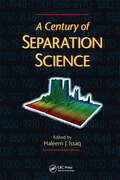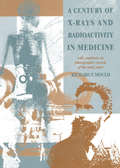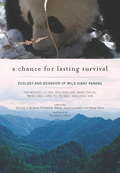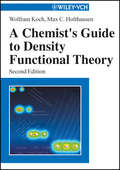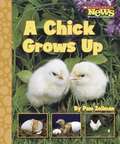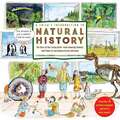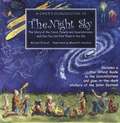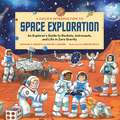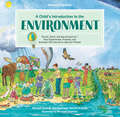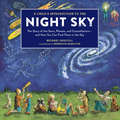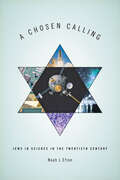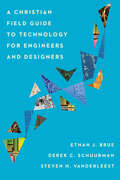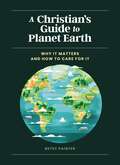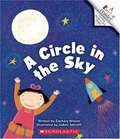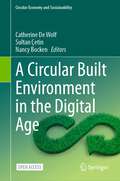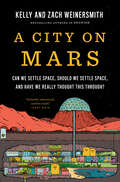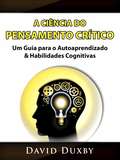- Table View
- List View
A Century of Separation Science
by Haleem J. IssaqA Century of Separation Science presents an extensive overview of the critical developments in separation science since 1900, covering recent advances in chromatography, electrophoresis, field-flow fractionation, countercurrent chromatography, and supercritical fluid chromatography for high-speed and high-throughput analysis.
A Century of X-Rays and Radioactivity in Medicine: With Emphasis on Photographic Records of the Early Years
by R.F MouldA Century of X-Rays and Radioactivity in Medicine: With Emphasis on Photographic Records of the Early Years celebrates three great discoveries-x-rays (1895), radioactivity (1896), and radium (1898)-and recalls the pioneering achievements that founded the new science of radiology and changed the face of medicine forever. Over 700 historical illustrations with full and informative captions are supported by short introductory essays to illuminate the fascinating radiological past in an easy-to-read style.The focus of this book is on the historically more interesting early years of discovery, invention, diagnosis, therapy, dosimetry, risk, and protection. Interspersed with a variety of radiological anecdotes, the photographic record is complemented by archival accounts of the pioneer scientists and physicians and their early patients. In the chapters on diagnostic techniques, radiotherapy, and nuclear medicine, the author contrasts old methods with newer technologies. He also includes two fascinating chapters on museum and industrial applications of radiography. The book is comprehensively indexed for easy retrieval of the wide variety of people, techniques, apparatus, and examples featured throughout this radiological journey.
A Chance for Lasting Survival
by David Garshelis Wang Dajun Richard B. Harris William J. Mcshea Pan WenshiFrom 1984 through 1995 a small band of ecologists led by Pan Wenshi from Peking University conducted a study of wild giant pandas in the Qinling Mountains of Shaanxi Province. This project was the first Chinese-led conservation project in China and was conducted during a significant transition period in Chinese history, as the country opened its society and science to the world. The project focused on behavioral observation of wild giant pandas, but evolved to include physiology, nutrition, ecology, land-use policy, and population biology as the staff became more aware that the issues with captive pandas (assisted reproduction, unusual diet, and genetic inbreeding) were not the most critical to survival of wild populations. It is evident in this work that, as the scientists gained knowledge, they came to see giant panda conservation as wrapped in landscape ecology and human/wildlife interactions. The group was seminal in the Chinese government's enactment of a logging ban to their study area by advocating for pandas at the national level. The project was summarized in a 2001 volume, but its publication in Mandarin limited its influence on the greater conservation community. This English version of the original work translates, condenses, and refines the original volume, with added contextual chapters on the importance of this volume and how our understanding of giant panda conservation is shaped by this pioneering field work.
A Chemist's Guide to Density Functional Theory
by Wolfram Koch Max C. Holthausen"Chemists familiar with conventional quantum mechanics will applaud and benefit greatly from this particularly instructive, thorough and clearly written exposition of density functional theory: its basis, concepts, terms, implementation, and performance in diverse applications. Users of DFT for structure, energy, and molecular property computations, as well as reaction mechanism studies, are guided to the optimum choices of the most effective methods. Well done!" Paul von Rague Schleyer "A conspicuous hole in the computational chemist's library is nicely filled by this book, which provides a wide-ranging and pragmatic view of the subject.[...It] should justifiably become the favorite text on the subject for practioneers who aim to use DFT to solve chemical problems." J. F. Stanton, J. Am. Chem. Soc. "The authors' aim is to guide the chemist through basic theoretical and related technical aspects of DFT at an easy-to-understand theoretical level. They succeed admirably." P. C. H. Mitchell, Appl. Organomet. Chem. "The authors have done an excellent service to the chemical community. [...] A Chemist's Guide to Density Functional Theory is exactly what the title suggests. It should be an invaluable source of insight and knowledge for many chemists using DFT approaches to solve chemical problems." M. Kaupp, Angew. Chem.
A Chick Grows Up
by Pam ZollmanThis series introduces young readers to the life cycles of living things. Readers will learn how chicks grow up to become roosters or hens, how some sharks come from eggs while others do not, and much more.
A Child's Introduction To Natural History: The Story Of Our Living Earth-from Amazing Animals And Plants To Fascinating Fossils And Gems (A\child's Introduction Ser.)
by Heather Alexander Meredith HamiltonIn the tradition of Black Dog's best-selling Child's Introduction books, which include The Story ofthe Orchestra and A Child's Introduction to the Night Sky, A Child's Introduction to Natural History introduces readers ages 8 to 12 to the fascinating wonders of our natural world. Highlighting every kingdom of life--plants, bacteria, mammals, birds, amphibians, insects, rocks and minerals--the book is also full of charming and witty illustrations by Meredith Hamilton plus 30 photographs throughout. The book delves into topics like geology; prehistoric times, including fossils and dinosaurs; how animals move and fly; evolution; biomes; and more. Sidebars throughout offer biographies of naturalists like Charles Darwin, Mary Anning, and Charles Henry Turner. Also includes fun, hands-on projects for kids to do on their own or with adults and 5 origami patterns to create your own paper fox, whale, penguin, and more. Beautifully illustrated and designed, this is an entertaining and educational look at our natural history.
A Child's Introduction To The Night Sky: The Story Of The Stars, Planets And Constellations - And How You Can Find Them In The Sky (Child's Introduction Series)
by Meredith Hamilton Michael Driscoll<P>Children eight and up will enjoy this conversational but information-packed introduction to astronomy and stargazing, which includes the achievements of the great scientists, the history of space exploration, the story of our solar system, the myths behind the constellations, and how to navigate the night sky. <P>Whimsical color illustrations on every page and handy definitions and sidebars help engage younger readers and develop their interest. <P>The special star wheel helps locate stars and planets from any location at any time of year.<P> This is the third in Black Dog & Leventhal's successful series including The Story of the Orchestra and A Child's Introduction to Poetry.
A Child's Introduction to Space Exploration: An Explorer's Guide to Rockets, Astronauts, and Life in Zero Gravity (A Child's Introduction Series)
by David J Eicher Michael E. BakichGet ready to blast off into the space! This interactive, fact-filled book by two space experts takes kids aged 8-12 on a journey through the universe with answers to all their questions on space exploration--from what the first rockets looked like and the first animal in space to what space food tastes like and what it&’s like to live in zero gravity. We are living in a golden age of astronomy and space exploration, with more discoveries about the universe every day. With so many possibilities now open to us, revered science writers Michael E. Bakich and David J. Eicher will take young readers on a journey to the throughout the universe in this latest edition of A Child&’s Introduction series.Perfect for budding explorers aged 8-12, Bakich and Eicher explore the history of space exploration from the very first rocket in China, to the moon landing, to the latest missions to Mars (and beyond). They also include profiles of noteworthy scientists, engineers, and astronauts including Isaac Newton, Neil Armstrong, Mae Carol Jemison; fun sections on space food, UFOs, a timeline of space suits, and how to go to the bathroom in space; and STEM experiments like how to build your own rocket and how to tell time using the sun. Packed with dozens of NASA photos and charming original illustrations, and a pull-out poster, this fascinating book reveals the wonders of space exploration—past, present and future!
A Child's Introduction to the Environment: The Air, Earth, and Sea Around Us -- Plus Experiments, Projects, and Activities YOU Can Do to Help Our Planet! (A Child's Introduction Series)
by Michael Driscoll Dennis DriscollExplore the water, land, and air around us with this entertaining and informative look at our magnificent planet—and learn how your experiments, activities, and everyday actions can help save the environment. This book looks at the wide variety of ecosystems and environmental regions of the Earth, from deserts and forests, to cities and farms, to oceans and ice caps, as well as the atmosphere, weather, energy sources, plants, and animals of each area. Michael Driscoll and professor of meteorology Dennis Driscoll explain the changes to our planet that are currently taking place, including rising temperatures and sea levels, and the effects they can have on our environment. They also profile young environmental activists like Greta Thunberg and Isra Hirsi, and highlight important, everyday actions such as water conversion and recycling that kids can do on their own or with their parents. Also included are fun projects and experiments to do at home like brewing sun tea, creating lightning, and making a smog detector. Packed with facts, experiments, and a removable poster with tips on how to save the planet, this comprehensive guide will inspire kids and their families to think about our planet in new ways and help keep it beautiful and healthy for years to come.
A Child's Introduction to the Night Sky: The Story of the Stars, Planets, and Constellations--and How You Can Find Them in the Sky (A Child's Introduction)
by Meredith Hamilton Michael DriscollThis charming exploration of the night sky -- featuring a star finder and glow-in-the-dark stickers -- which has more than a quarter of a million young astronomers enjoying the night sky in countries around the world, is now completely revised and updated. A Child's Introduction to the Night Sky is the perfect introduction to the always fascinating world of astronomy. Children ages eight and up will find out what astronomers have learned (and are still discovering), what astronauts and scientists explore, and what they can find by gazing up into the sky at night. Author Michael Driscoll explains how stars are born, the achievements of the great scientists, the history of space exploration, the story of our solar system, the myths behind the constellations, how to navigate the night sky, and more. Whimsical color illustrations throughout and handy definitions and sidebars help engage younger readers and develop their interest. Also included are a nifty star finder tool and fun glow-in-the-dark stickers.
A Child's Place In Time and Space, Inquiry Journal
by William Deverell Kevin P. Colleary James BanksNIMAC-sourced textbook
A Child's Place in Time and Space, [Grade 1] (Weekly Explorer Magazine)
by McGraw Hill EducationNIMAC-sourced textbook
A Chosen Calling: Jews in Science in the Twentieth Century (Medicine, Science, and Religion in Historical Context)
by Noah J. EfronQuestions traditional explanations for Jewish excellence in science in the United States, the Soviet Union, and Palestine in the twentieth century.Scholars have struggled for decades to explain why Jews have succeeded extravagantly in modern science. A variety of controversial theories—from such intellects as C. P. Snow, Norbert Wiener, and Nathaniel Weyl—have been promoted. Snow hypothesized an evolved genetic predisposition to scientific success. Wiener suggested that the breeding habits of Jews sustained hereditary qualities conducive for learning. Economist and eugenicist Weyl attributed Jewish intellectual eminence to "seventeen centuries of breeding for scholars."Rejecting the idea that Jews have done well in science because of uniquely Jewish traits, Jewish brains, and Jewish habits of mind, historian of science Noah J. Efron approaches the Jewish affinity for science through the geographic and cultural circumstances of Jews who were compelled to settle in new worlds in the early twentieth century.Seeking relief from religious persecution, millions of Jews resettled in the United States, Palestine, and the Soviet Union, with large concentrations of settlers in New York, Tel Aviv, and Moscow. Science played a large role in the lives and livelihoods of these immigrants: it was a universal force that transcended the arbitrary Old World orders that had long ensured the exclusion of all but a few Jews from the seats of power, wealth, and public esteem. Although the three destinations were far apart geographically, the links among the communities were enduring and spirited. This shared experience—of facing the future in new worlds, both physical and conceptual—provided a generation of Jews with opportunities unlike any their parents and grandparents had known.The tumultuous recent century of Jewish history, which saw both a methodical campaign to blot out Europe's Jews and the inexorable absorption of Western Jews into the societies in which they now live, is illuminated by the place of honor science held in Jewish imaginations. Science was central to their dreams of creating new worlds—welcoming worlds—for a persecuted people.This provocative work will appeal to historians of science as well as scholars of religion, Jewish studies, and Zionism.
A Christian Field Guide to Technology for Engineers and Designers
by Derek C. Schuurman Ethan J. Brue Steven H. VanderLeestOur technology shapes the way we live, interact, work, play, and even worship.biblical themes and passages that relate to technologythe ethics and norms involved in technology designhow engineering and technology tap into human dreams for a better worldAlong the way they acknowledge the challenges arising from technology but also point to the wonderful possibilities it offers us and its ability to contribute to the common good. For Christians studying and working in engineering, computer science, technical design, architecture, and related fields, this book is packed with wisdom and practical guidance. By sharing what they have learned, the authors encourage readers to ask harder questions, aspire to more noble purposes, and live a life consistent with their faith as they engage with technology.
A Christian's Guide to Planet Earth: Why It Matters and How to Care for It
by Betsy PainterFrom conservation to protecting endangered species to sustainable living, A Christian's Guide to Planet Earth offers a faith-based framework for viewing our responsibility to the natural world as well as practical, biblical ways we can care for the magnificent creation around us.Drawing on science and Scripture, this hope-filled and reader-friendly guide helps us navigate questions about caring for and respecting God's world. With a focus on real-life solutions, this book explores answers to questions such as:What does the Bible say about food shortages, forests, and pollution?How can we make ethical choices about what we eat and what we wear?Why is reducing our carbon footprint a way of loving others?What do animals tell us about God's design for the earth?What simple choices can we make to help recover God's beauty in creation?Four-color infographics throughout highlight the inherent grandeur of the natural world, stirring our hearts to care about the wild and wondrous things God has made. Each chapter concludes with practical tips on how to become better stewards of the Earth, including how to support efforts that make a positive difference in the world.A Christian's Guide to Planet Earth is ideal for:Anyone who wants to make a difference for the planet but doesn't know where to startReaders interested in how stewardship of the water, air, land, and gardens relates to serving God and our neighborBible studies and church small groupsHomeschooling families and networksAnyone who loves God's beauty in natureReaders with questions about how changes to our earth affect the planet and our livesEqual parts philosophical and practical, this guide provides us a deeper understanding of God's love for His creation and the delightful, God-given privilege we have to enjoy it and care for it well.
A Circle in the Sky
by Zachary WilsonA child puts together various simple shapes to build a rocket that will fly to the moon.
A Circular Built Environment in the Digital Age (Circular Economy and Sustainability)
by Catherine De Wolf Nancy Bocken Sultan ÇetinThis open access book offers a comprehensive exploration of the digital innovations that have emerged in recent years for the circular built environment. Each chapter is meticulously crafted to ensure that both academic readers and industry practitioners can grasp the inner workings of each digital technology, understand its relevance to the circular built environment, examine real-life implementations, and appreciate the intriguing business models behind them. Our primary objective is to blend scholarly knowledge with practical inspiration by providing real-life case studies for each innovation. The authors, who possess extensive expertise in their respective fields, have contributed chapters dedicated to digital technologies within their areas of specialization. The book is organized into three distinct parts. The first part focuses on data-driven digital technologies and delves into how their capabilities can facilitate the transition to a circular built environment. Essential aspects such as building information modeling (BIM), digital twins, geographical information systems (GIS), scanning technologies, artificial intelligence (AI), data templates, and material passports are explored as vital tools for data collection, integration, and analysis in the context of circular construction. In the second part, various digital technologies for design and fabrication are introduced. Topics covered include computational design algorithms, additive and subtractive manufacturing, robotic manufacturing, and extended reality. These discussions shed light on how these technologies can be leveraged to enhance design and fabrication processes within the circular built environment. Finally, the last part of the book presents emerging digital concepts related to business and governance. It explores the role of deconstruction and reverse logistics, blockchain technology, digital building logbooks, and innovative business models as enablers of circularity in the built environment. The book concludes with a chapter dedicated to digital transformation and its potential to propel the built environment towards a regenerative future. In addition to the substantive content, the book features forewords and perspectives from esteemed experts, providing valuable economic and creative insights to complement its comprehensive approach.
A Citizen's Guide to Artificial Intelligence
by John ZerilliA concise but informative overview of AI ethics and policy.Artificial intelligence, or AI for short, has generated a staggering amount of hype in the past several years. Is it the game-changer it's been cracked up to be? If so, how is it changing the game? How is it likely to affect us as customers, tenants, aspiring home-owners, students, educators, patients, clients, prison inmates, members of ethnic and sexual minorities, voters in liberal democracies? This book offers a concise overview of moral, political, legal and economic implications of AI. It covers the basics of AI's latest permutation, machine learning, and considers issues including transparency, bias, liability, privacy, and regulation.
A City on Mars: Can we settle space, should we settle space, and have we really thought this through?
by Kelly Weinersmith Zach Weinersmith* THE INSTANT NEW YORK TIMES BESTSELLER * Scientific American&’s #1 Book for 2023* A New York Times Book Review Editors' Choice * A Times Best Science and Environment Book of 2023 *&“Exceptional. . . Forceful, engaging and funny . . . This book will make you happy to live on this planet — a good thing, because you&’re not leaving anytime soon.&” —New York Times Book ReviewFrom the bestselling authors of Soonish, a brilliant and hilarious off-world investigation into space settlementEarth is not well. The promise of starting life anew somewhere far, far away—no climate change, no war, no Twitter—beckons, and settling the stars finally seems within our grasp. Or is it? Critically acclaimed, bestselling authors Kelly and Zach Weinersmith set out to write the essential guide to a glorious future of space settlements, but after years of research, they aren&’t so sure it&’s a good idea. Space technologies and space business are progressing fast, but we lack the knowledge needed to have space kids, build space farms, and create space nations in a way that doesn&’t spark conflict back home. In a world hurtling toward human expansion into space, A City on Mars investigates whether the dream of new worlds won&’t create nightmares, both for settlers and the people they leave behind. In the process, the Weinersmiths answer every question about space you&’ve ever wondered about, and many you&’ve never considered:Can you make babies in space? Should corporations govern space settlements? What about space war? Are we headed for a housing crisis on the Moon&’s Peaks of Eternal Light—and what happens if you&’re left in the Craters of Eternal Darkness? Why do astronauts love taco sauce? Speaking of meals, what&’s the legal status of space cannibalism?With deep expertise, a winning sense of humor, and art from the beloved creator of Saturday Morning Breakfast Cereal, the Weinersmiths investigate perhaps the biggest questions humanity will ever ask itself—whether and how to become multiplanetary.Get in, we&’re going to Mars.
A Ciência do Pensamento Crítico: Um Guia para o Autoaprendizado & Habilidades Cognitivas
by David DuxbyVocê gostaria de ser capaz de pensar criticamente e com clareza? As técnicas de pensamento crítico já vêm sendo utilizadas há muito tempo para tomar decisões melhores em todos os aspectos da vida, literalmente! Ao usar as técnicas de pensamento crítico, será mais fácil planejar seu orçamento, aumentar sua renda, viver bem, ter uma alimentação mais saudável, tomar melhores decisões, ter mais disposição, foco e satisfação de maneira geral e muito mais! Desenvolva suas habilidades de pensamento crítico e cultive emoções mais positivas e mais qualidade de vida. Este guia apresenta os segredos dos profissionais mais eficientes e como eles usam o pensamento crítico! Após décadas de estratégias testadas, este e-book trará a você a maneira mais rápida e eficiente de usar o pensamento crítico para o seu benefício e bem-estar! Você aprenderá técnicas comprovadas sem precisar investir em cursos caros ou outros materiais complementares. O que você encontrará neste guia: - Tome melhores decisões. - Tenha relações mais saudáveis. - Ganhe mais dinheiro. - Tenha mais energia. - Alimente-se melhor. - Reduza e elimine a ansiedade. - Tenha um sono de melhor qualidade. - Aprenda a lidar com desafios e obstáculos com maior facilidade. E muito mais! Se você quer se tornar mais saudável ou melhorar o seu foco e o seu bem-estar, então este guia é para você.
A Classification of North American Biotic Communities
by David E. Brown Frank Reichenbacher Susan E. FransonBuilding upon existing classification systems of natural environments, this visually-oriented guide--from the Arctic Circle to Central America--advocates a universal, biogeographic standard for inventorying regional.
A Clear Flowing Yarra
by Harry SaddlerThey say you can't step in the same river twice, and it's true that the Yarra has been hugely changed - but this book is a glorious and timely reminder that things can also be changed for the better.Nature writer Harry Saddler hops, skips and jumps his way along, beside, on and even in the Yarra River from source to mouth, reveling in its hidden beauty, getting close to platypuses, kingfishers, Krefft's gliders and the occasional seal, and meeting many of the swimmers, bushwalkers, ecologists and traditional owners who are quietly and tenaciously restoring the river, patch by patch.Optimistic, inspiring and heartfelt, A Clear Flowing Yarra is a passionate love letter to the river that shapes Melbourne, and an evocative vision of what it is now and what it can be.
A Clear Flowing Yarra
by Harry SaddlerThey say you can't step in the same river twice, and it's true that the Yarra has been hugely changed - but this book is a glorious and timely reminder that things can also be changed for the better.Nature writer Harry Saddler hops, skips and jumps his way along, beside, on and even in the Yarra River from source to mouth, reveling in its hidden beauty, getting close to platypuses, kingfishers, Krefft's gliders and the occasional seal, and meeting many of the swimmers, bushwalkers, ecologists and traditional owners who are quietly and tenaciously restoring the river, patch by patch.Optimistic, inspiring and heartfelt, A Clear Flowing Yarra is a passionate love letter to the river that shapes Melbourne, and an evocative vision of what it is now and what it can be.
A Climate for Change
by Katharine Hayhoe Andrew FarleyMost Christian lifestyle or environmental books focus on how to live in a sustainable and conservational manner. A CLIMATE FOR CHANGE shows why Christians should be living that way, and the consequences of doing so. Drawing on the two authors' experiences, one as an internationally recognized climate scientist and the other as an evangelical leader of a growing church, this book explains the science underlying global warming, the impact that human activities have on it, and how our Christian faith should play a significant role in guiding our opinions and actions on this important issue.
A Clinical Guide for Cancer Prostate Patient
by Narmada GuptaThis book imparts a thorough understanding of the proper diagnosis, evaluation, and management of a patient with prostate cancer. The book provides guidelines for evaluation and investigation to reach a diagnosis with appropriate risk stratification of the disease, which is essential to evaluate the patient's survival and quality of life after the treatment. The book offers assistance, as per the patient and disease factors, appropriate treatment planning for an individual patient, and treatment outcomes for a better follow-up. This book aims to cover all aspects of prostate cancer with an additional supplement to the existing books in urology. This book targets postgraduates in urology, oncology, uro-oncology, practicing urologists, oncologists, and prostate cancer patients to know all aspects of the disease.
